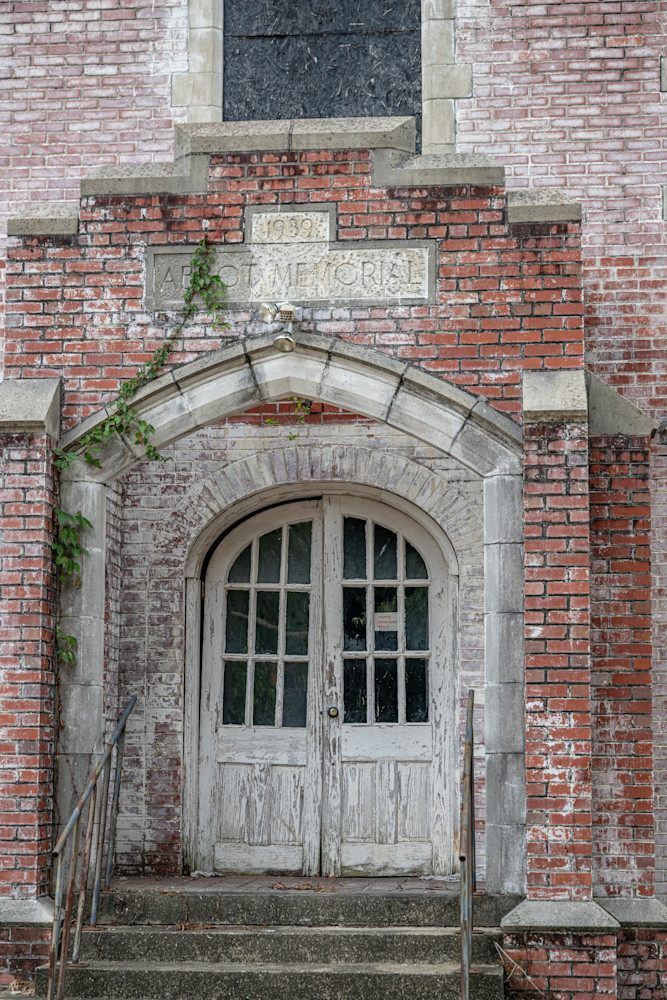The Abot Memorial 1939 brick building stands as a weathered testament to the passage of time. Its faded doors, once vibrant, now bear the marks of countless years, and the crumbling brick facade speaks of a history that has weathered both the elements and the changing tides of life.
In a close-up view, the faded doors reveal layers of paint that have chipped away, exposing the wood beneath. The colors, once bold, have softened to a muted palette, reminiscent of the era in which the building was constructed. The texture of the wood tells stories of countless hands that have opened and closed these doors, each touch leaving a trace on the weathered surface.
The brick facade, bearing the scars of time, showcases the artistry of aging. Cracks and crevices weave their way through the once-sturdy structure, and the bricks, now weathered and worn, exude a sense of character. Moss and lichen may find a home within the crevices, adding a touch of nature's reclamation to the architectural canvas.
As the camera zooms in, the details become more pronounced—the grain of the wood, the texture of the brick, the intricate patterns of decay. The building, with its faded doors and crumbling brick, becomes a poignant reflection of the ephemerality of human endeavors and the enduring beauty found in the gentle decay of time. The close-up view invites contemplation, encouraging viewers to appreciate the delicate beauty of impermanence.














